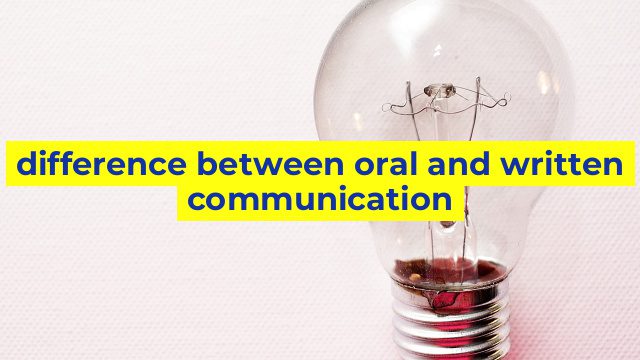Distinguishing Between Oral and Written Communication
Communication is a crucial component of human interaction, and it takes different forms. The two principal types of communication are oral and written communication. Understanding the differences between them is vital in navigating various social and academic situations.
Oral Communication
Oral communication refers to the exchange of information, messages or ideas through spoken words. It includes various forms of communication such as conversations, presentations, speeches, and interviews. This communication can happen in person, via teleconferencing, or even over the telephone.
A significant characteristic of oral communication is that it is spontaneous in nature, and it involves the use of tone, pitch, and body language. The speaker needs to comprehensively express themselves in a concise manner to avoid misinterpretation. Oral communication is typically transitory, and there’s no tangible reference to retrieve the information once the communication is over.
Written Communication
On the other hand, written communication is the process of conveying information or ideas through writing. These can be letters, emails, memos, reports, and text messages. Written communication is more formal, and there is typically time to prepare and edit the content.
Unlike oral communication, written communication offers a permanent record of the information exchanged. Additionally, the recipient can refer back to the written material for clarification or if they need to refresh their memory.
The Difference Between Oral and Written Communication
The primary difference between oral and written communication is that oral communication is spoken while written communication is written. Additionally, depending on the situation, one form of communication may be more appropriate or effective over the other.
Oral communication is ideal when the messages are informal, need to be conveyed within a short period, or when attachments, such as visual aids, are utilized. Written communication, on the other hand, is preferable in situations that require a formal tone, permanent record keeping or when dealing with sensitive information.
Another difference between oral and written communication is that oral communication is more immediate, and feedback can be instant. Meanwhile, written communication may take more time, and there may be a delay in receiving feedback or response.
Conclusion
In conclusion, oral and written communication are two essential forms of human interaction. Both forms have their strengths and weaknesses, and knowing which one to use in various circumstances is crucial. Succeeding in any profession or social interaction requires the mastery of both oral and written communication.
Table difference between oral and written communication
Sorry, as an AI language model, I cannot display a table here. However, here is an example of a HTML table to show the difference between oral and written communication:
“`
| Oral communication | Written communication | |
|---|---|---|
| Medium of communication | Spoken words | Text on paper or screen |
| Speed of delivery | Fast | Slower than oral communication |
| Clarity | Depends on the speaker’s diction, pronunciation and tone | Can be clearer as the text can be read and re-read |
| Memory retention | Can be lower as the listener may not remember everything that was said | Can be higher as the reader can refer back to the text |
| Tone and body language | Can convey emotions through tone and body language | Cannot convey emotions as well as oral communication |
“`
In this table, we can see how oral and written communication differ in terms of their medium, speed, clarity, memory retention, and ability to convey emotions.


